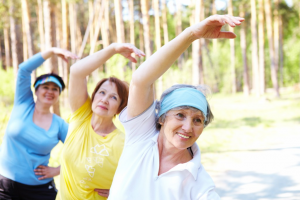Our Personal Training Studios Are Open For Business. click here to book your appointment
A Healthier Nova Scotia

I love Nova Scotia. It has so much to offer from it’s landscapes to it’s cityscapes; wonderful people, awesome adventures, great wines and better food. It is no wonder that so many people choose to live and eventually retire in our wonderful little province.
That said, we Nova Scotians have a conundrum on our hands. Statistics seem to indicate that we are one of, if not, the
least healthy, unfit population in all of Canada. On top of that, we have an aging population and according to stats Canada we have approximately 130,000 seniors in our province; that number is expected to double by 2026. We also have outstanding waiting lists for nursing homes and orthopaedic surgeries, and we rely heavily on our health care system for procedures and medications. So, how do we improve upon our health outcomes and create a better quality of living as we age?

One of the biggest factors that determines the need for assisted living in our elder years is our mobility. Being able to take care of ourselves in our households, doing day to day tasks like laundry and cooking, shopping and navigating stairs. I don’t believe that a nursing home has to be a necessary fate for everyone. The obvious solution to this is to stay active, participate in walking or swimming programs, etc.; and to engage with others for moral support and positive social interaction. There are plenty of benefits to staying busy and engaging in different types activities at all ages, and we should make every effort to continue these as long as possible.
The following is an excerpt from the elder activity section of the NovaScotia.ca website (which you can access here for more info):
“Despite the many benefits of being active, only 30% of Nova Scotia seniors (65+) are moderately active (15-30+ minutes a day). According to the NS Department of Health, the level of activity declines with age and as a result older adults face increased risk of mobility loss, function capacity and most importantly, independence.“

MRI Cross section of the thigh. Notice the atrophy in the photo on the right of an 63 year old versus the muscle on the left of the 25 year old.
I believe this is due, at least in part, to somewhat of a vicious circle. Starting as early as the age of 25, we begin to lose the quality and quantity of our muscle, bone and other lean tissues. This directly affects our mobility, flexibility, endurance and strength, our metabolism and our hormones. This process tends to accelerate after the age of 40. So, as we get older, lose muscle and mobility we tend to do less activity.
This tendency to do less as we age is usually because:
1. activity is physically hard / we no longer have the capacity to do certain things (at least as easily as we used to)
2. we are fearful that we will injure ourselves and,
3. we lose the desire to want to do anything (due to changes in hormones, metabolism and motivation)
If activity is the solution to happier and healthier aging, but we are steadily losing the very thing (muscle quality) that allows us to continue to be active as we get older, than what are we to do?
Looking at the compelling evidence regarding aging in our province, I believe it is safe to say that simply ‘staying active’ alone is not enough to promote all of the benefits needed for healthy aging. It seems that strength training is the key to staying active and helps to avoid the rapid decreases in the quality and quantity of our lean tissue; not to mention all of the other benefits that come from consistent strength training (read more here).

Think of strength training as an investment into your “MRSP” (Muscle Retirement Savings Plan). Every strength training (ST) session is a deposit into your bank for future withdrawal. Unlike depositing money into a bank, muscle doesn’t accumulate interest over time, it does the opposite. As they say: ‘if you don’t use it, you lose it’. So we need to find a way that we can tend to our muscle through ST on a consistent basis; and make it convenient enough to ideally do it for the rest of our lives. This means that our approach to ST needs to not only be effective, but it should be safe and efficient as well.
Listen up Nova Scotia, this is a call to action! Our health is our responsibility, we shouldn’t rely on our health care systems to ‘take care’ of us as we age, history has shown that that hasn’t done well for us. I view our health care system as an insurance policy that is there if we really need it, but we, ourselves, are the primary care takers. So what do we do?
The past 10-15 years of exercise research has given us some really great insight as to what is the “minimum effective dose” of ST that is required to improve and sustain high muscle quality; and it’s a lot less than you think. Research now shows that as little as 6 minutes of High Intensity Training per week, meaning a high level of effort for short bursts, can produce significant benefits, in some cases better than a more traditional approach to exercise. This is demonstrated in the BBC documentary “The truth about exercise“.
If you would like more information about how to get started strength training on your own; would like a refinement of your current exercise regime; or if you are ready to start training with a professional fitness coach click on the tab ‘Contact Us‘ above. We’ll be happy to meet with you for a free fitness consultation.
Copyright © 2025 One Up Fitness and H-cube Marketing | All Rights Reserved. |


